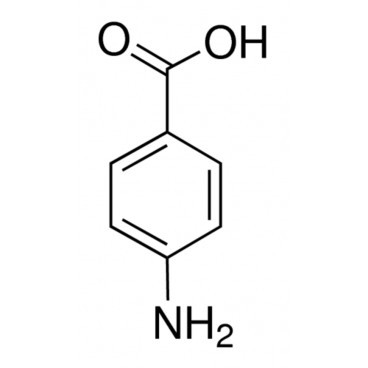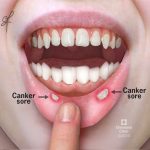
Contents
What Is PABA Used For and What Are the Side Effects?
PABA, or para-aminobenzoic acid, is a natural substance found in some foods and is part of the B complex group. It is a precursor to folate and helps certain skin conditions.
PABA is found in some foods and is available as a supplement. While it is generally safe to take, topical products may cause reactions.
PABA stands for para-aminobenzoic acid. It is sometimes referred to as vitamin Bx or B10 and belongs to the B complex group, although it is not a vitamin. PABA is essential for plants, bacteria, and some animals, but not for humans.
PABA is present in foods like mushrooms, molasses, whole grains, liver, spinach, and Brewer’s yeast. It is also used in sunscreen, medications, and in the pulp and paper industry as a UV-protection coating.
PABA supplements can be found in pharmacies and health food stores. It is generally considered non-toxic, but side effects are known.
Health Benefits of PABA
PABA was once used for skin and hair care and as a treatment for certain diseases. However, the results of studies on its benefits are mixed.
Precursor for Folate
Vitamins are essential nutrients that the body needs but cannot produce in sufficient amounts. Folate, or vitamin B9, is one of these vitamins.
Folate is necessary for the production of DNA, RNA, proteins, healthy red blood cells, breaking down homocysteine, and the development of a healthy nervous system in unborn babies.
PABA is a precursor for folate. While bacteria in the gut produce PABA, it is not enough to meet the body’s needs. Folate or folic acid must be obtained from food.
PABA was previously used in sunscreens to absorb and break down UVB radiation, protecting the skin from its harmful effects.
However, PABA is photosensitive and allergenic, and it can cause rashes and sensitivity to sunlight. The government plans to classify PABA as not generally safe for sunscreens.
Possible Help for Skin Conditions
PABA is also used in the treatment of some autoimmune skin disorders, including scleroderma, dermatomyositis, and Peyronie’s disease. However, the effectiveness of PABA in treating these conditions is inconclusive.
Scleroderma is a condition that causes the skin to thicken and become tight due to the immune system’s incorrect response. PABA can help improve oxygen uptake by tissues, potentially reducing scarring. There are conflicting results from studies on its effects.
Peyronie’s disease causes scars under the skin of the penis, leading to curvature and difficulties with erections. While PABA might help in some cases, results vary and it may not reverse the condition.
Enhances Antibiotic Activity
Despite being an essential nutrient for bacteria, PABA has antibacterial properties. It can inhibit the growth of certain strains of bacteria, such as Listeria, Salmonella, and E. coli.
PABA can also enhance the efficacy of antibiotic medications against drug-resistant strains of Staph and Pseudomonas bacteria. However, its poor absorption limits its usefulness in treatments.
Temporary Re-pigmentation of Gray Hair
PABA has been used since 1941 to darken gray hair. Studies have shown that daily doses of 200 milligrams of PABA can lead to re-pigmentation of gray hair. However, the effects are temporary and the hair returns to its gray color after discontinuing PABA supplementation.
Side Effects of PABA
While PABA is generally non-toxic, it can cause allergic reactions and digestive issues. Rare side effects have also been reported.
Digestive Upset
PABA supplements can cause stomach upset, including nausea, vomiting, and diarrhea. Headaches have also been reported.
Rashes
Topical use of PABA in creams or sunscreens can cause itchy, red rashes. Large doses of PABA may also make the skin sensitive to sunlight, resulting in a rash.
Liver Injury
PABA has been linked to cases of liver injury in patients receiving treatment for Peyronie’s disease. However, patients recovered fully after discontinuing the medication.
Blocks CoQ10
PABA seems to interfere with Coenzyme Q10 (CoQ10) production, a substance used by cells for energy production and DNA protection. PABA treatment may cause a decrease in CoQ10 levels and an increase in free radical damage in mitochondria. However, more research is needed to determine the implications of this interference.
PABA Is Generally Safe
PABA is considered non-toxic and safe as a supplement. However, it is no longer used in sunscreens due to the potential for rashes and allergic reactions. Consult your doctor before using PABA for health purposes.
QUESTION
American College of Rheumatology: "Scleroderma."
Archives of General Internal Medicine: "Treatment of Scleroderma with Para-Aminobenzoic Acid: Effect on Disease Morbidity."
Biomolecules: "4-Aminobenzoic Acid Derivatives: Converting Folate Precursor to Antimicrobial and Cytotoxic Agents."
Current Medicinal Chemistry: "Drug evolution: p-aminobenzoic acid as a building block."
Dermatitis: "Para-Aminobenzoic Acid (PABA) and Sunscreen Allergy."
European Urology: "Potassium paraaminobenzoate (POTABA) in the treatment of Peyronie’s disease: a prospective, placebo-controlled, randomized study."
Frontiers in Physiology: "Impact of Chemical Analogs of 4-Hydroxybenzoic Acid on Coenzyme Q Biosynthesis: From Inhibition to Bypass of Coenzyme Q Deficiency."
Harvard T.H. Chan School of Public Health: "Vitamins and Minerals."
International Journal of Cosmetic Science: "Commonly used UV filter toxicity on biological functions: review of last decade studies."
Journal of the American Medical Association: "Dangers of Orally Administered Para-aminobenzoic Acid."
Journal of Applied Biomaterials & Functional Materials: "Investigation of the effect of para-amino benzoic acid (PABA) added starch-coated chemicals on the printability properties of paper."
Journal of Inherited Metabolic Disease: "Human neuronal coenzyme Q10 deficiency results in global loss of mitochondrial respiratory chain activity, increased mitochondrial oxidative stress and reversal of ATP synthase activity: implications for pathogenesis and treatment."
Journal of Pharmacy and Bioallied Sciences: "Coenzyme Q10: The essential nutrient."
Journal of Rheumatology: "Comparison of aminobenzoate potassium and placebo in the treatment of scleroderma."
Journal of Sexual Medicine: "Acute hepatitis associated with treatment of Peyronie’s disease with potassium para-aminobenzoate (Potaba)."
National Institute of Diabetes and Digestive and Kidney Diseases: "Penile Curvature (Peyronie’s Disease)."
National Library of Medicine MedlinePlus "Para-aminobenzoic acid."
Nutrients: "Folate Production by Probiotic Bacteria."
Proges en Urologie: "[Pathophysiology and management of Peyronie’s disease in adult patients: an update]."
Skin Appendage Disorders: "Medication-Induced Repigmentation of Gray Hair: A Systematic Review."
U.S. Food & Drug Administration: "Questions and Answers: FDA posts deemed final order and proposed order for over-the-counter sunscreen."


